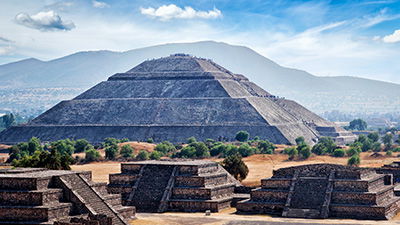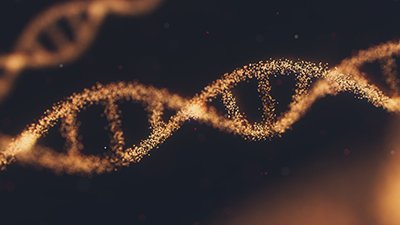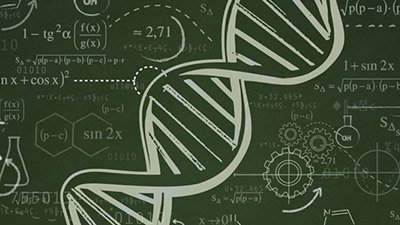Persistent Protein
Preservation of collagen fibers in a marine reptile fossil is said to prove “biomolecular preservation over deep time.”
News Source
Mosasaurs are marine lizards believed by evolutionary paleontologists to have become extinct 65 million years ago. Documenting the preservation of protein fibers in a mosasaur fossil, Swedish researchers have concluded that biological soft tissues and molecules can survive for millions of years.
“The fossil record is capable of exceptional preservation and occasionally labile and decay-prone tissues, such as skin and melanosomes (color-bearing organelles), are preserved as phosphatized remains or organic residues with a high degree of morphological fidelity,” they state. “Yet, whether multimillion-year-old fossils harbor original organic components remains controversial, and, if they do, a positive identification of these biomolecules is required.”1
The 2005 discovery of unfossilized connective tissue in a dinosaur bone excited controversy about how long soft tissues could survive. Either the dinosaur wasn’t as old as evolutionists supposed, or soft tissues could last 65 million years. Since that time the challenge has been to prove that biological molecules could survive those long ages.
The present study combines state-of-the-art techniques to demonstrate that collagen molecules—not just their mineralized replacements—survive in the fossil. Collagen is the main protein in bone.
Synchrotron radiation-based infrared microspectroscopy uses a tightly focused beam of infrared radiation to stimulate molecules. Biological molecules respond by vibrating in characteristic ways. Thus molecular mapping can now be carried out at a subcellular level. This technique demonstrated the presence of collagen protein fibers in the fossil. Antibody-tagging techniques proved the fibers were still biologically identifiable as collagen. Amino acid analysis showed that the amino acids which make up collagen were actually still present. The spectroscopic signatures were distinctly different from those expected from bacterial contaminants.
Thus, the study shows that some fossils still carry original organic components. However, nothing in this remarkable study has demonstrated how long those protein molecules have been preserved.
Notice that the ScienceDaily article did not report any carbon-14 dating.* Why? Because the presupposition that the fossil must be millions of years old eliminates any consideration of such a test. Carbon-14 would not be detectable in organic material millions of years old. Carbon-14 decays rapidly enough that it would become undetectable after 95,000 years. The technique is also not applicable to fully mineralized fossils because the organic carbon is all gone. The researchers actually did find some C-14. However, they attributed the small amount they found to contamination since they also found DNA from bacteria, humans, and animal glue. We contend the contaminants make the dates obtained from the C-14 uninterpretable but not irrelevant. But the researchers would have appeared foolish to their colleagues had they used such a test to suggest a young age for their ancient collagen.
This interpretation ignores the explanation based on the Flood geology model: animals of various types were swept up together in the rising waters of the Flood and buried in groups according to factors like body density.
Fossils are normally dated according to the presumed age of the rock layers where they are found. Mosasaurs are said to have “inhabited marine environments during the Late Cretaceous” era. In other words, because their fossils, like those of the dinosaurs, are mostly found in the Cretaceous layer of the geologic column, they are believed to have lived then. This interpretation ignores the explanation based on the Flood geology model: animals of various types were swept up together in the rising waters of the Flood and buried in groups according to factors like body density. In other words, the geologic column is more like an obituary column than a timeline of life forms.
Massive upheavals of water and sediment caused rapid burial of organisms under conditions which facilitated fossilization. Studies like this one should provide further insight into the processes of fossilization itself.
* Update June 27, 2011. The source article2 did briefly mention the 14C analysis methods and results. Thanks to some astute readers for pointing this out to us.
Further Reading
- Doesn’t the Order of Fossils in the Rock Record Favor Long Ages?
- Radiocarbon Ages for Fossil Ammonites and Wood in Cretaceous Strata near Redding, California
- Dinosaur Killer
- Chalk and “Upper Cretaceous” Deposits are Part of the Noachian Flood
- Soft Tissue Fossilization
For More Information: Get Answers
Remember, if you see a news story that might merit some attention, let us know about it! (Note: if the story originates from the Associated Press, FOX News, MSNBC, the New York Times, or another major national media outlet, we will most likely have already heard about it.) And thanks to all of our readers who have submitted great news tips to us. If you didn’t catch all the latest News to Know, why not take a look to see what you’ve missed?
(Please note that links will take you directly to the source. Answers in Genesis is not responsible for content on the websites to which we refer. For more information, please see our Privacy Policy.)
Footnotes
- Johan Lindgren et al., “Microspectroscopic Evidence of Cretaceous Bone Proteins,” PLoS ONE 6, no. 4 (2011): doi:10.1371/journal.pone.0019445; emphasis added.
- Ibid.

Answers in Genesis is an apologetics ministry, dedicated to helping Christians defend their faith and proclaim the good news of Jesus Christ.
- Customer Service 800.778.3390
- Available Monday–Friday | 9 AM–5 PM ET
- © 2026 Answers in Genesis




